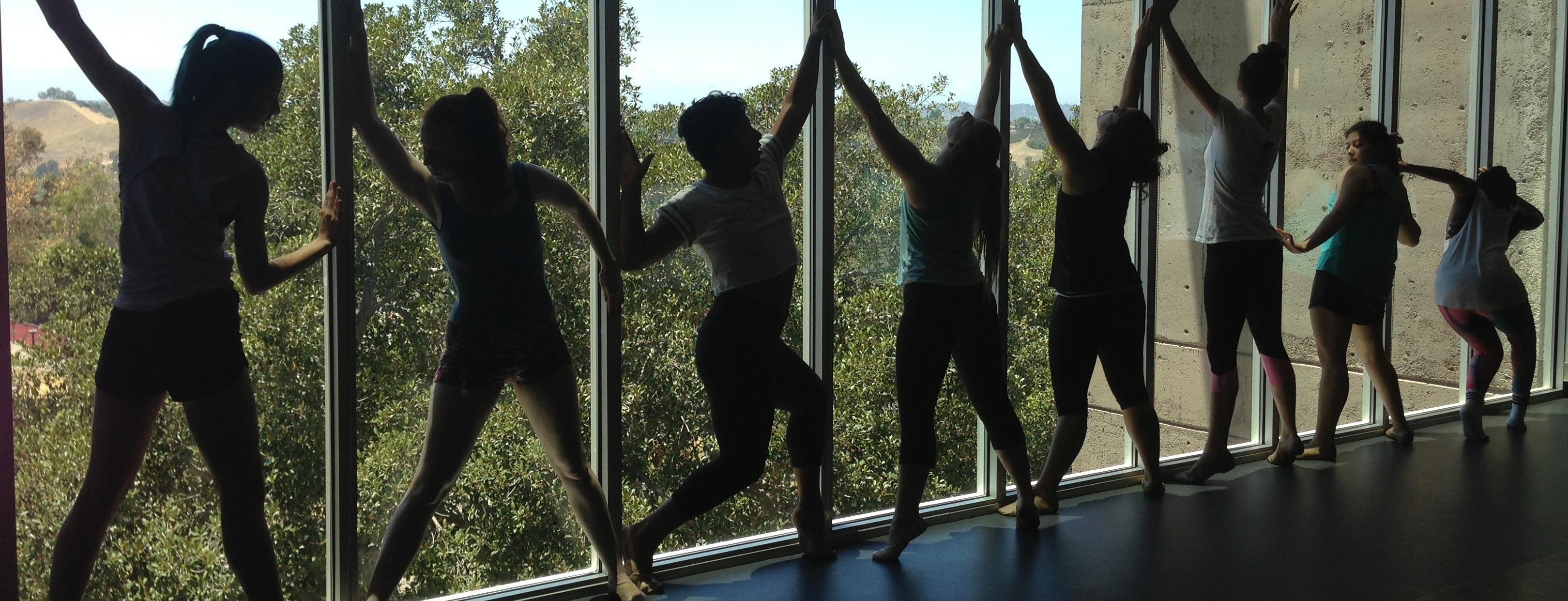This post was written by Deidre Cavazzi, a dance academic on sabbatical in Galway.
Jessamyn Fairfield and I met sharing a tiny cabin aboard a tallship in the Arctic for several weeks in 2017 as part of the Arctic Circle Summer Solstice Residency, and decided to collaborate on a project for National Science Week Ireland 2018. I am a choreographer based in Southern California, and chair of the Dance Department at Saddleback College, where I teach technique courses in modern dance and ballet, and lecture courses in Dance History, Philosophy of Yoga, and Honors Humanities. As an academic and an artist, I find that I am often defending the role of dance in higher education, and reminding others that yes, dancers do have brains as well as bodies!
When Jessamyn asked me to take part in Bright Club, I began thinking about what I could talk about…theatrical dance is usually serious…often waaaay too serious and overly dramatic (there is a joke among dance historians that death scenes of ballerinas take an average of ten minutes onstage, with frequent revivals and lots of angst-filled twirling and swooning before they finally expire). But as I thought about it, I realized we dancers have an awful lot of quirky traditions and behaviors, whether the theatre tradition of greeting each other backstage with a call of Merde! (because if you start with s**t, it can only get better!), using butt glue to keep costumes in place (super sticky spray adhesive to keep our bits in the proper places while we leap about the stage), and stuffing lambs’ wool in our pointe shoes (to minimize bleeding and blisters—they only look dainty and satiny on the outside!). There are taboos on farting in the wings and adjusting wedgies onstage, and all sorts of grim tales of vengeful dancers sabotaging fellow performers with tacks in costumes or chili powder in water bottles. Dance history is full of stories of kings and queens with ambitions to be dancing stars (even if it bankrupts the kingdom), deadly fashion accessories, and bizarre love triangles that result in tragic librettos and romantic poetry. And of course, as a college professor, I have lots of stories of apathetic students, who despite my impassioned lectures, are only interested in knowing “is this going to be on the exam?”

Armed with notes, I attended a Bright Club training with the talented Áine Gallagher, and fellow academics Christopher (George) Lally and Amir Abdo. Áine put us at ease with icebreakers, and gave us helpful suggestions to fine tune our sets. The evening of the show, I of course had rehearsal beforehand—we dancers joke that no matter the occasion, there will inevitably be rehearsal scheduled beforehand so that we arrive sweaty and disheveled, with the oh-so-seductive aroma of Deep Heat clinging to us. I was extremely nervous, and sat with Amir, anxious to go first so that I could then relax and enjoy all the other comics. The audience was very supportive, and smiled and laughed warmly for everyone; it was a very inspiring event to be part of, and I thoroughly enjoyed everyone’s sets, laughing at everything from communication breakdowns in biochemical engineering to egotistical yogis, and pelvic floor exercises (complete with puppet demonstration) to lubricants!
I highly recommend Bright Club, and look forward to doing it again in the future (there are still dance belts and pasties to cover); this was a fantastically fun experience, and a memorable event to be part of during my month-long stay here in Galway. Now, Jessamyn and I are gearing up for NanoDance—a collaborative production using dance theatre to envision concepts from her nanoscience research, which will premiere Thursday November 15 at the O’Donoghue Centre at NUI Galway! Tickets are free but can be booked online here.

